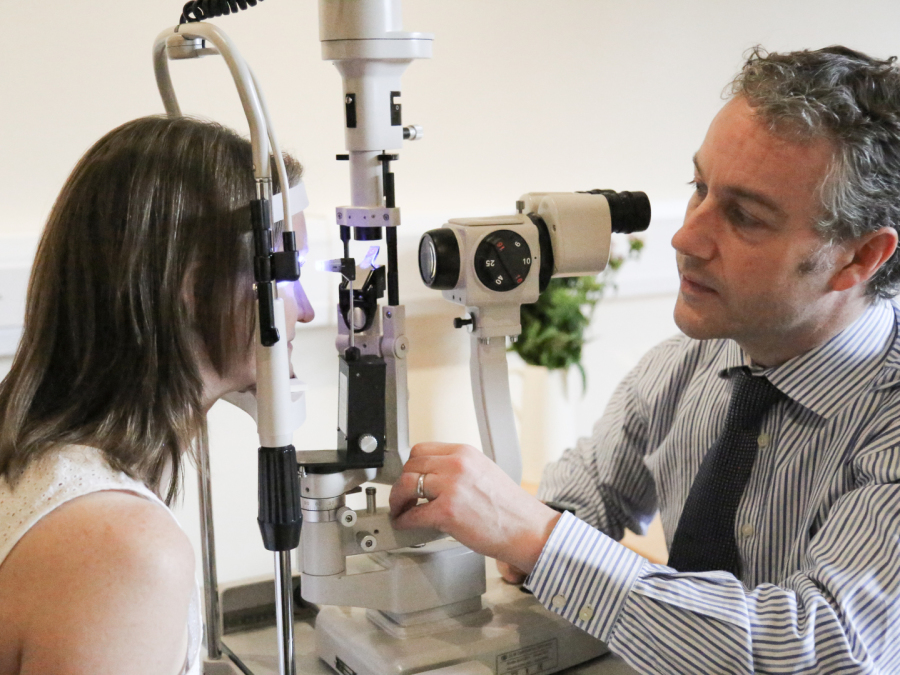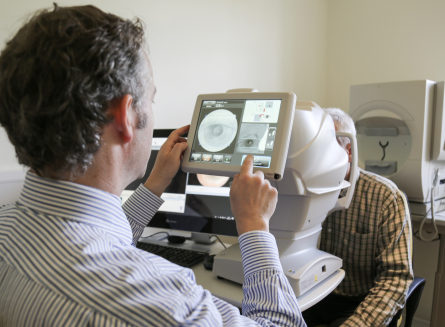Glaucoma
What is glaucoma?
Glaucoma is the term given to a range of conditions characterised by irreversible damage to the optic nerve, the nerve which carries sight from the eye to the brain.
The main risk factor for developing glaucoma is pressure within the eye (intraocular pressure, IOP) which is too high. There is no absolute value for what constitutes "too high", rather that the pressure in the eye is too high for that patient. Some people have high pressure with no damage while others develop glaucoma at lower pressures.
This damage usually occurs slowly and is not apparent to the person until the majority of sight is permanently lost. By this stage the vision may be so severely affected as to result in loss of the driving licence so it is preferable to detect risk factors before damage occurs, or as early signs of glaucoma become apparent.
This is achieved through three tests which are part of the optometrist's routine sight test - measuring the IOP, assessing the field of vision and looking at the appearance of the optic nerve.
Treatment
Treatment for glaucoma is directed at achieving a safe IOP, which means keeping the IOP below the level at which damage to the optic nerve occurs.
This level will differ between individuals so a series of assessments is needed as well as regular follow-up visits.
Treatment consists of :
1. Eye drops (and occasionally tablets)
2. Laser
3. Surgery
Glaucoma is usually a lifelong condition but with appropriate treatment and monitoring it is usually possible to prevent significant visual loss.


